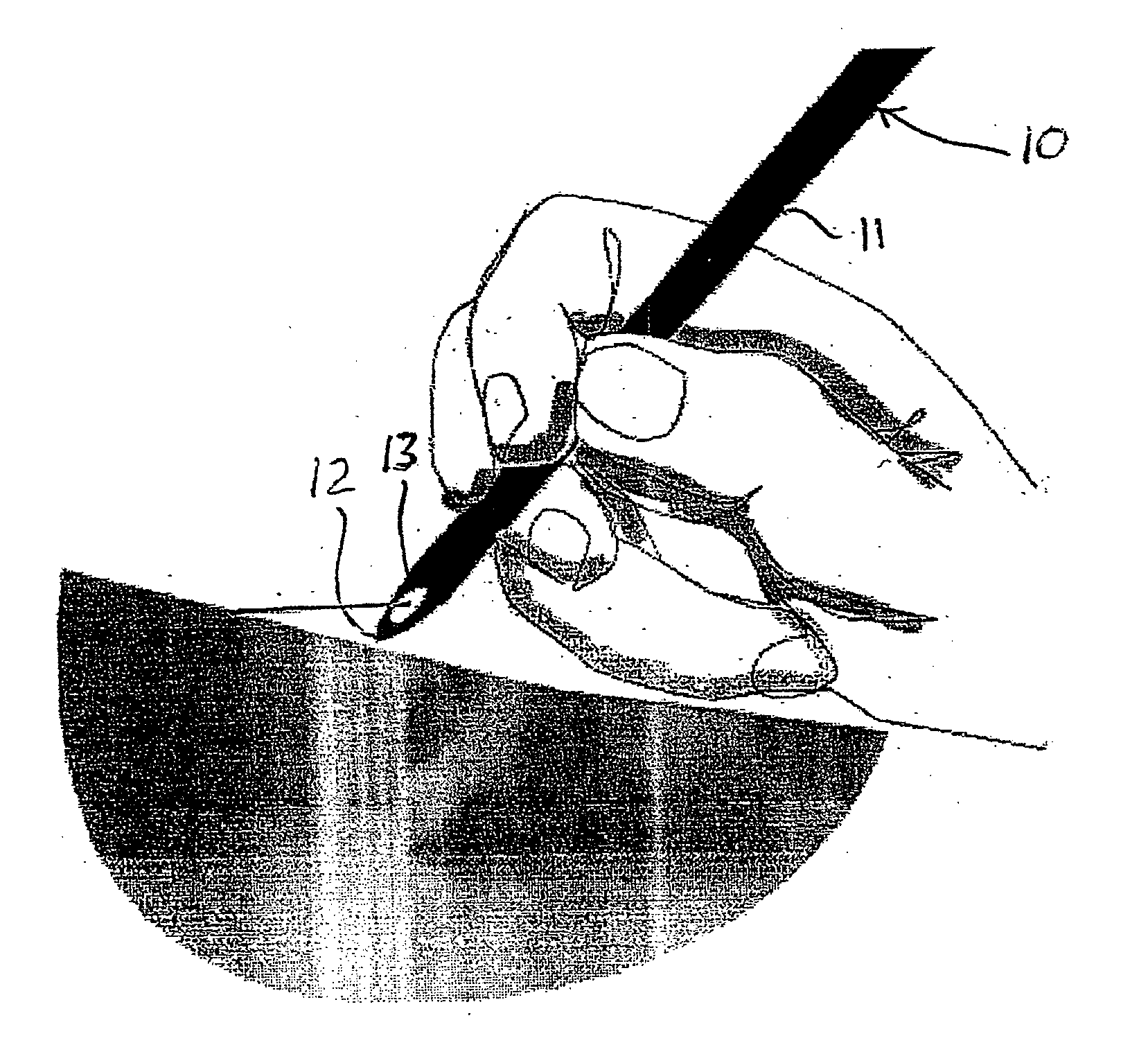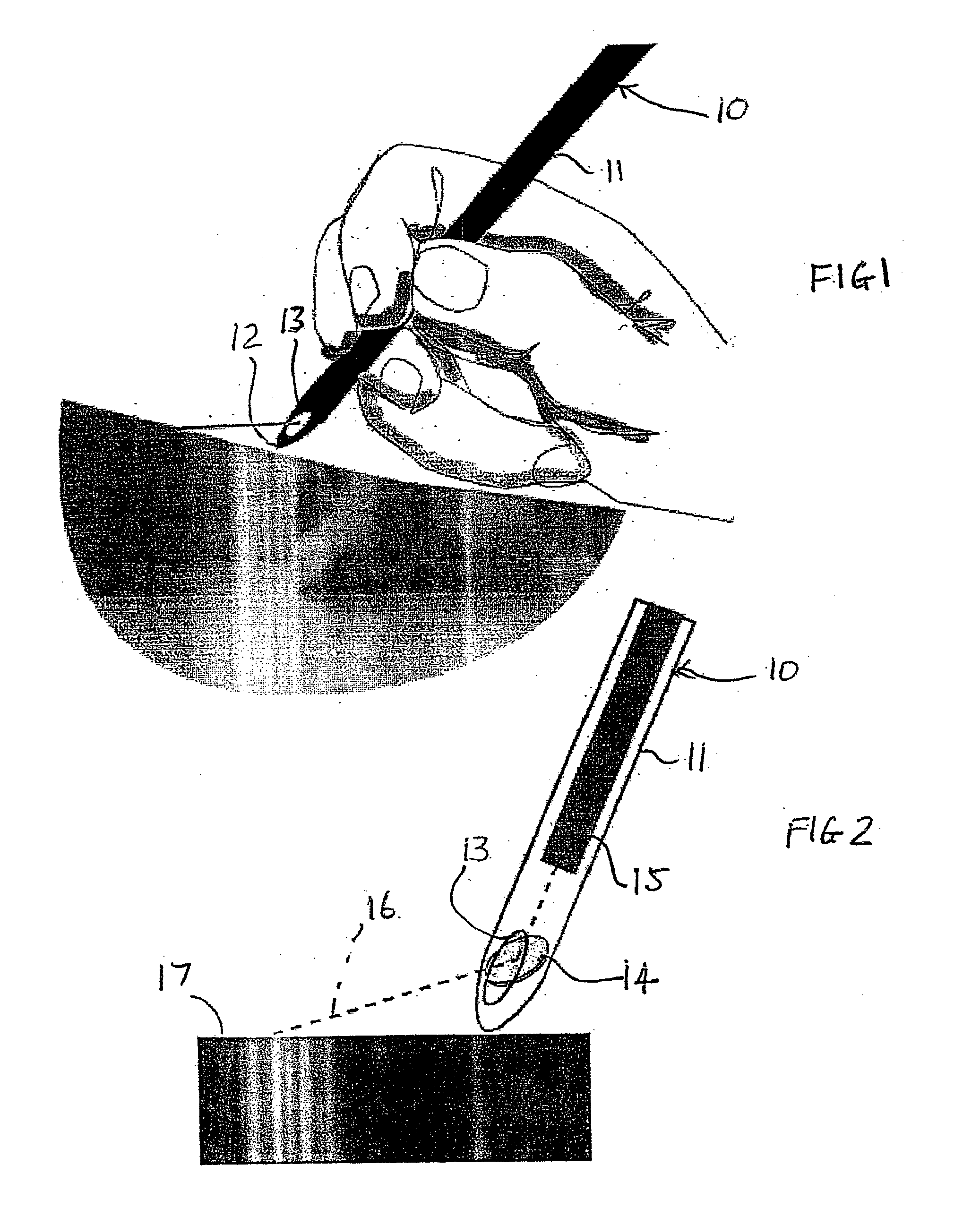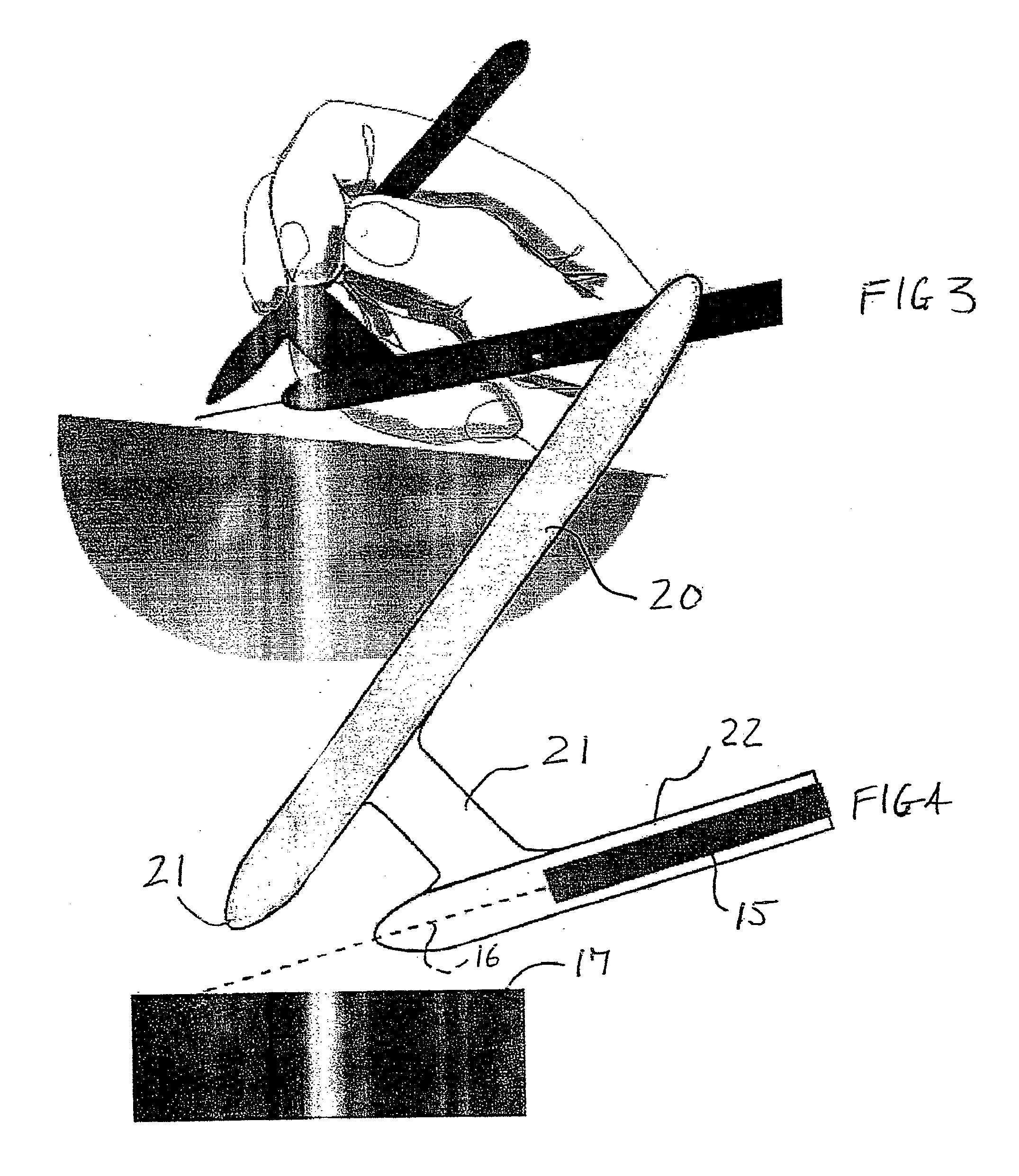Laser treatment
a laser treatment and body technology, applied in the field of laser treatment of the body, can solve the problems of unacceptable tissue scarring rate, high energy level used, and eventually abandoned experimental techniques, and achieve the effects of reducing the appearance of irregular skin colouration, safe and effective methods, and facilitating rapid healing
- Summary
- Abstract
- Description
- Claims
- Application Information
AI Technical Summary
Benefits of technology
Problems solved by technology
Method used
Image
Examples
Embodiment Construction
[0052] The human skin can generally be considered to consist of three layers, the epidermis, the dermis, and the hypodermis.
[0053] The epidermis is the top layer of the skin and largely acts as a barrier to the external environment to seal and protect the body from infection and to retain moisture within the body. The epidermis is generally built up of several layers of living cells and top layers of dead cells, and is constantly growing with new cells being created at its base and old cells quickly dying. In this regard, as old skin cells die, they are pushed toward the surface by the constantly growing new cells where the dead cells eventually flake away. The epidermis is also responsible for the colouring of the skin as it holds the skins pigment and its thickness can vary significantly, ranging from between 0.05 mm and 1.5 mm.
[0054] Below the epidermis is the dermis which essentially contains the structural elements of the skin, which is composed entirely of living cells and c...
PUM
 Login to View More
Login to View More Abstract
Description
Claims
Application Information
 Login to View More
Login to View More - R&D
- Intellectual Property
- Life Sciences
- Materials
- Tech Scout
- Unparalleled Data Quality
- Higher Quality Content
- 60% Fewer Hallucinations
Browse by: Latest US Patents, China's latest patents, Technical Efficacy Thesaurus, Application Domain, Technology Topic, Popular Technical Reports.
© 2025 PatSnap. All rights reserved.Legal|Privacy policy|Modern Slavery Act Transparency Statement|Sitemap|About US| Contact US: help@patsnap.com



